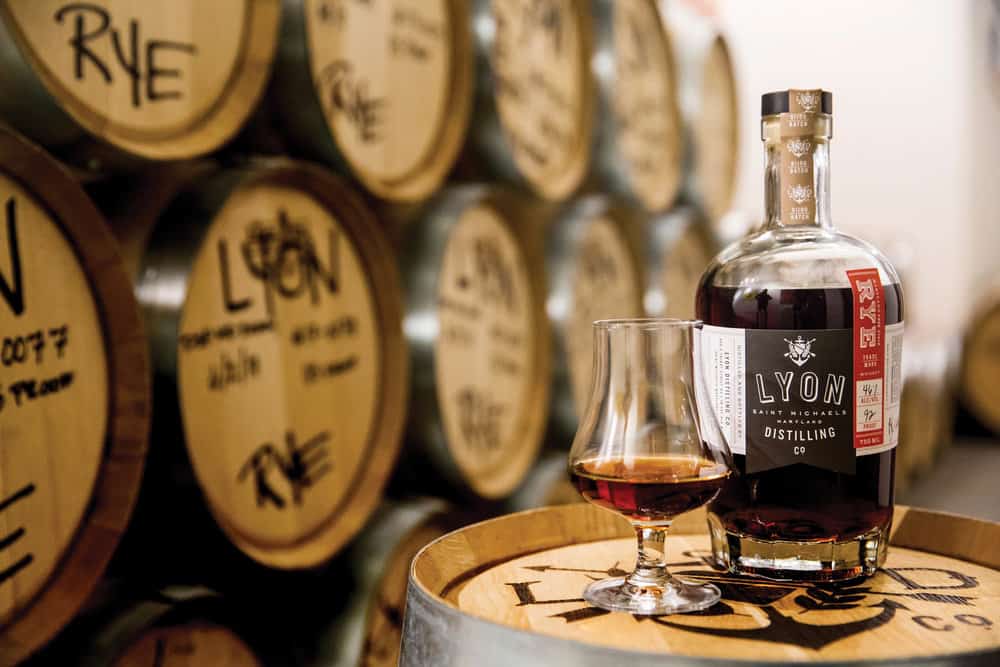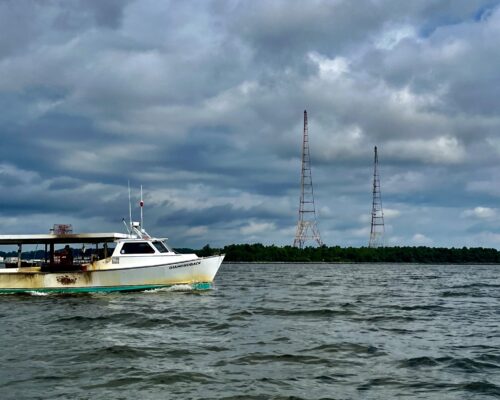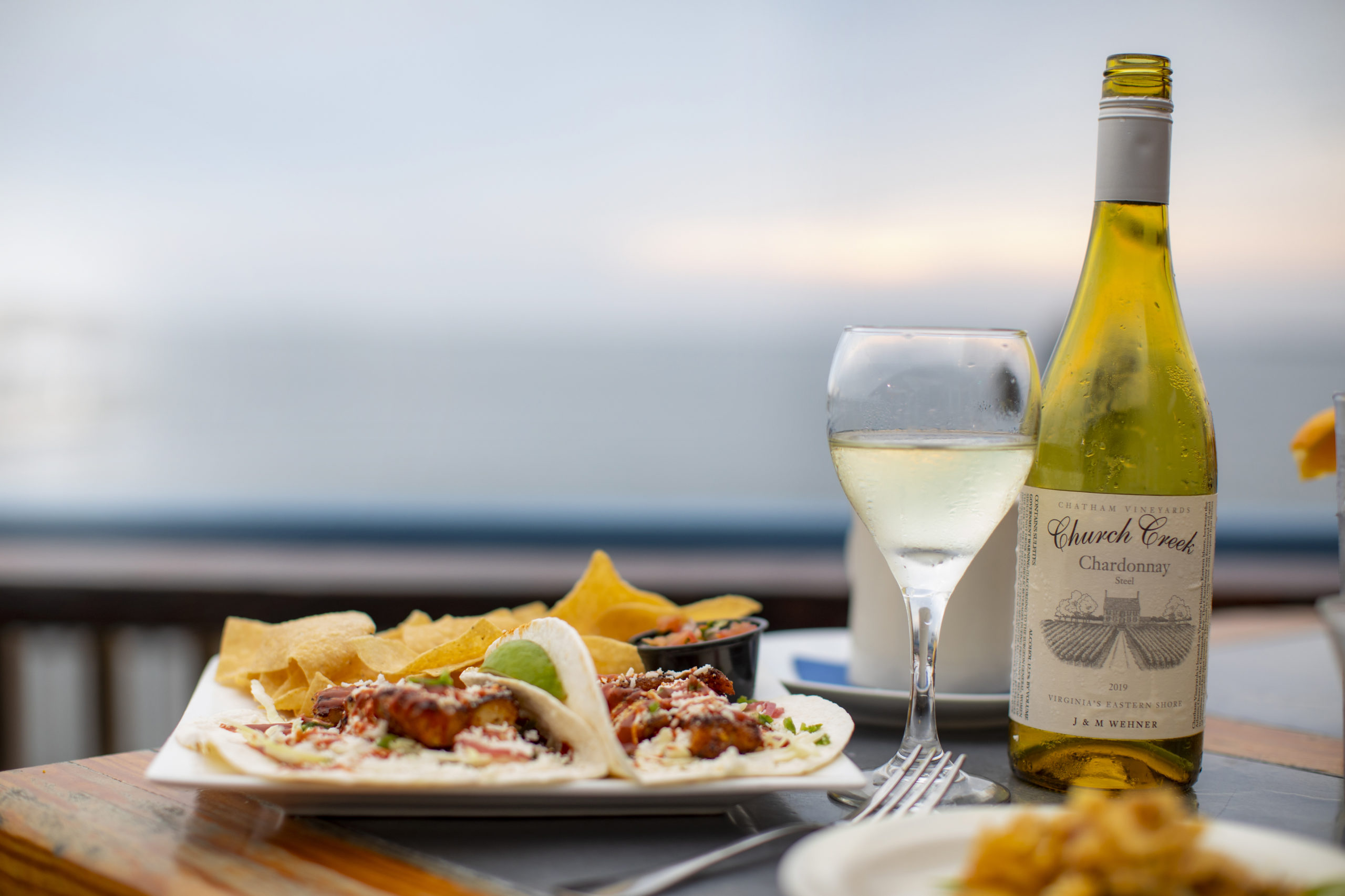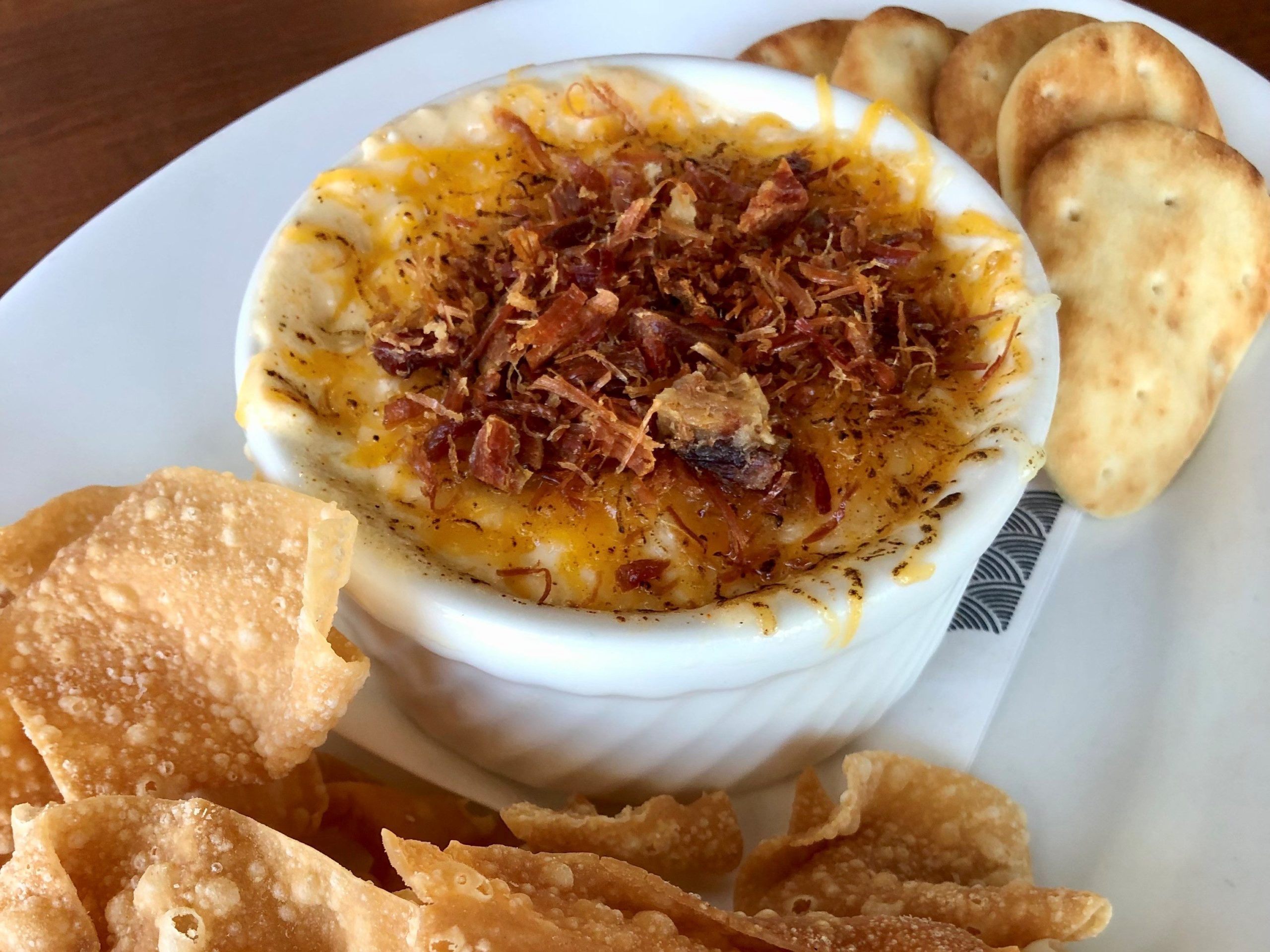Resurrecting an Old Spirit
Bourbon currently boasts a near-monopoly in the realm of American whiskey, but another spirit has long held sway around the Chesapeake—Maryland rye whiskey, a fruit-forward, easy-sipping, approachable style that was nationally popular in the 18th and 19th centuries.
A handful of the 30 or so registered distilleries in Maryland are bringing the spirit home again—Baltimore’s Sagamore Spirit being the most prominent. But good whiskey can’t be rushed. As of this writing, Sagamore is produced by a large distilling operation called Midwest Grain Products in Indiana, with plans for a fully local blend in the near future. The Lyon Distilling Co., in St. Michaels, claimed the title of first rye in Maryland since 1972 (more on that later) when its limited edition Maryland Free State Rye hit the glass in 2013.
Catoctin Creek distilling, in Virginia, has been making an award-winning rye close to home, and the Baltimore Spirits Company offers Epoch Straight Rye Whiskey, which was sold via crowdfunding in early 2016 and delivered to backers in mid-2018. It is distilled, aged and bottled in Maryland, and the rye grain is sourced from a farm in Thurmont, Maryland. Blackwater Distilling, on Kent Island, makers of Sloop Betty vodka, also has a limited-run, ongoing rye whiskey project, and DC’s One Eight Distilling has gotten into the act with its District Made (formerly Rock Creek) Rye whiskey distilled, aged, and bottled in that city.
Rye was the first recorded whiskey distilled in the US, in 1640 in the tiny New Netherland settlement on what is now Staten Island, but Maryland and Pennsylvania are the places most associated with the spirit. Corn, though native to the New World, was more difficult to grow in the mid-Atlantic than Europe’s hardy rye grain, which was quickly established as the crop of choice among early colonists.
Maryland whiskey consisted of roughly 2/3 rye, 1/3 corn, and a small amount of malted grain, which is added to aid fermentation. The other prominent whiskey of the time, Pennsylvania or Monongahela whiskey, was usually distilled exclusively from rye, which resulted in a bolder, grassy, sharper-flavored liquor. George Washington’s recipe, now produced in small batches at the reconstructed Mount Vernon distillery, was 60 percent rye, 35 percent corn, and five percent barley. That Maryland-style mix was named Virginia’s official state spirit in 2017.
Early American farmers made use of their surplus grain (in addition to corn and other cereals) by making beer, but beer was highly perishable. Distilling offered a means of making their harvest both shelf-stable by removing impurities, and more portable by concentrating it. This was a skill well known to settlers from Europe, and in Maryland many of those settlers were Irish, who were accustomed to the smooth-tasting spirit resulting from triple-distillation process common in their homeland. Demand spread across the continent after the Civil War, with soldiers returning home from Maryland taking their taste for the distinct tipple with them.
As cities on the coasts and their thirsty population grew, farming and eventually production crept further west. In the western region of the Virginia colony, homesteaders were offered free land as an incentive to grow corn and settle the area (some of that land later became Kentucky). It was the grain subsidy, rather than the oft-praised qualities of the water, that largely drove whiskey production there.
An important note is that whiskey up until the late 1700s was clear. By modern legal standards, which require aging in charred barrels, it would not have been considered whiskey. Although charring of barrels was a known technique in the old world, the practice of intentionally resting a clear distillate in them remains unclear in origin.
One theory holds that along the Monongahela in Western Pennsylvania, distillers would have to make long trips to get their whiskey to Philadelphia and Baltimore. Their whiskey could end up languishing in barrels for months if weather and road conditions were poor. These barrels were valuable multi-function storage vessels, storing one commodity on the way to market and another on the way back. Oysters would have been a common cargo to bring back from Baltimore. With limited means to remove odors or flavors from the wood that might seep into the next load of whiskey, distillers had little choice but to use fire to dry and disinfect the interior of their barrels. Clear whiskey that required a long voyage acquired a reddish-brown hue and secondary flavors from the charred wood. This whiskey became known as “Old Monongahela”, rising to such lasting notoriety that Melville compares the color of a whale’s blood to it in Moby Dick, which was published in 1851. Eventually, the flavors imbued from aging became the expected norm in whiskey, and even Maryland rye acquired a Monongahela hue.
No less a Baltimorean than H.L. Mencken listed rye whiskey among his favorite beverages, and quoted a friend calling “Maryland whiskey— the most healthful appetizer yet discovered by man.” According to Bud Johns’ biography The Ombibulous Mr. Mencken, he favored the Monticello brand, distilled in Baltimore, which Mencken’s own father claimed was “the best medicine he had ever found for toning up the stomach.”
The heyday of rye whiskey would end with prohibition in 1920, an occasion Mencken marked by selling his car in order to stock his liquor cabinet. The only true Maryland whiskey to survive to the modern day was the Pikesville brand, although production was moved to a larger distillery in Baltimore in 1936. It was made there for 36 more years, and the recipe was eventually acquired by a Kentucky company, leaving the gap that would be filled by Lyon Distilling 41 years later. The Kentucky product was sold regionally as Pikesville Supreme Straight Rye Whiskey until 2016, when the distiller decided to discontinue the locally-beloved value-priced brand and instead introduce to the market a premium version of Pikesville, which is aged twice as long, at triple the price. One Baltimore journalist, in a Mencken-like act of foresight, picked up five cases of the old blend before it disappeared.
Pikesville’s move was unsurprising, if widely lamented, since it is only in the last several years that rye whiskey has begun its comeback. Established distillers elsewhere in the country began distributing nationally, and new ones began to appear, angling their offerings as niche, artisan products. It has taken even longer for commercial rye whiskey-making to return to the Chesapeake region, and at last, to find its way home.




